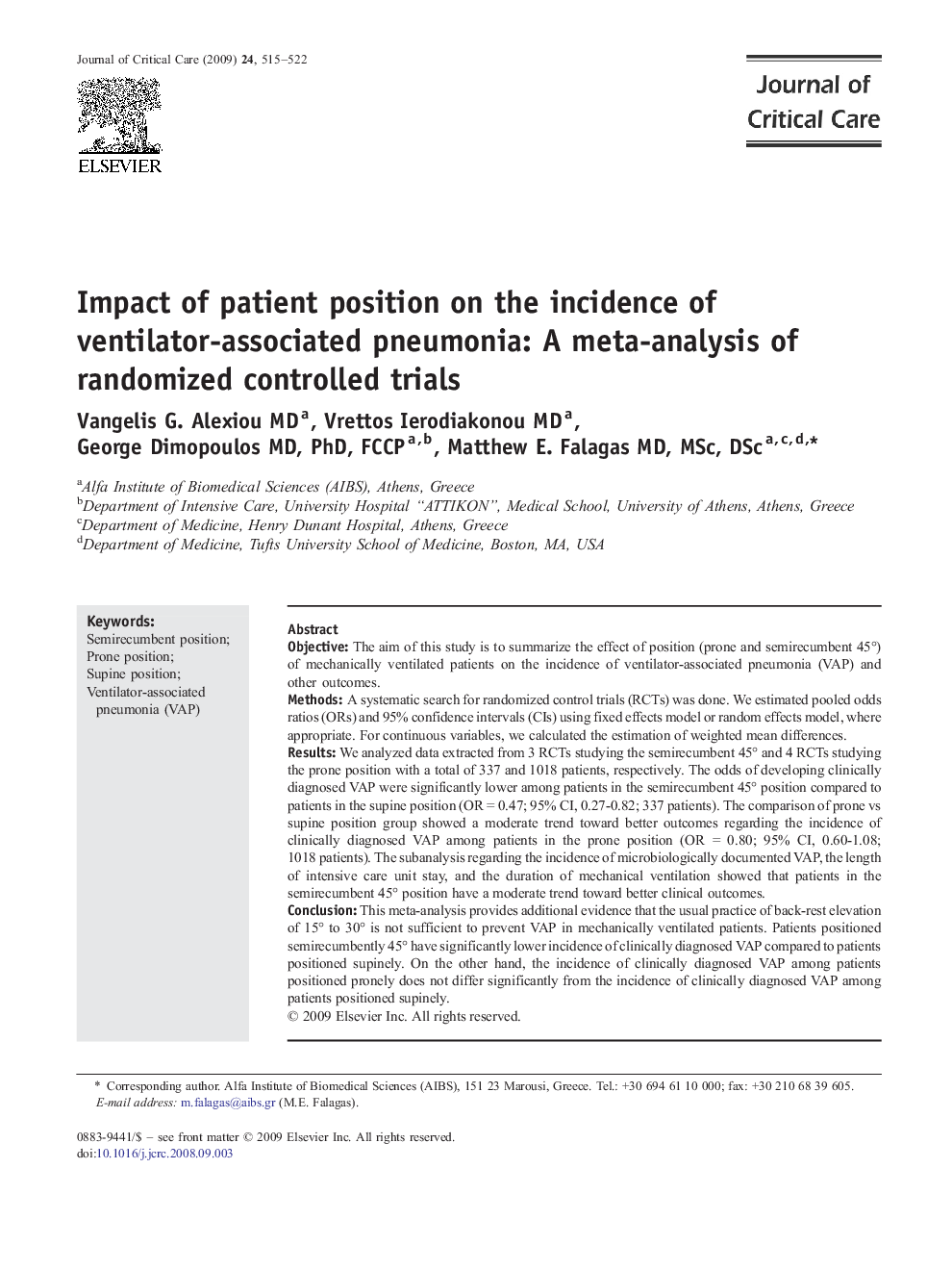| Article ID | Journal | Published Year | Pages | File Type |
|---|---|---|---|---|
| 2765609 | Journal of Critical Care | 2009 | 8 Pages |
ObjectiveThe aim of this study is to summarize the effect of position (prone and semirecumbent 45°) of mechanically ventilated patients on the incidence of ventilator-associated pneumonia (VAP) and other outcomes.MethodsA systematic search for randomized control trials (RCTs) was done. We estimated pooled odds ratios (ORs) and 95% confidence intervals (CIs) using fixed effects model or random effects model, where appropriate. For continuous variables, we calculated the estimation of weighted mean differences.ResultsWe analyzed data extracted from 3 RCTs studying the semirecumbent 45° and 4 RCTs studying the prone position with a total of 337 and 1018 patients, respectively. The odds of developing clinically diagnosed VAP were significantly lower among patients in the semirecumbent 45° position compared to patients in the supine position (OR = 0.47; 95% CI, 0.27-0.82; 337 patients). The comparison of prone vs supine position group showed a moderate trend toward better outcomes regarding the incidence of clinically diagnosed VAP among patients in the prone position (OR = 0.80; 95% CI, 0.60-1.08; 1018 patients). The subanalysis regarding the incidence of microbiologically documented VAP, the length of intensive care unit stay, and the duration of mechanical ventilation showed that patients in the semirecumbent 45° position have a moderate trend toward better clinical outcomes.ConclusionThis meta-analysis provides additional evidence that the usual practice of back-rest elevation of 15° to 30° is not sufficient to prevent VAP in mechanically ventilated patients. Patients positioned semirecumbently 45° have significantly lower incidence of clinically diagnosed VAP compared to patients positioned supinely. On the other hand, the incidence of clinically diagnosed VAP among patients positioned pronely does not differ significantly from the incidence of clinically diagnosed VAP among patients positioned supinely.
